SEO
SEO’s Whisper Network Hasn’t Stopped Conference Harassment. What’s Next?

In the spirit of sunlight as the best disinfectant – let’s talk about the news coming out of a Brighton SEO afterparty.
To the ‘freelancer’ I had to ask to “GO AWAY” repeatedly at the #BrightonSEO party yesterday – DO NOT TOUCH WOMEN YOU DON’T KNOW!! A tap on the shoulder – fine. Hand around waist or rubbing like you were – NOT OK!! You are the reason @brightonseo probably needs bouncers
— Judith Lewis (@JudithLewis) April 9, 2022
As some of you know, quite a few men crossed a line with female atendees in this edition of #BrightonSEO.
The better men in this industry must be allies to women and stop excusing this behaviour in the name of networking or politeness.— Lidia Infante (@LidiaInfanteM) April 9, 2022
Both Judith and Lidia thanked Brighton SEO and its organizers for quickly intervening, so let’s give that credit where it’s due.
Even so, we have to acknowledge there’s a glaring issue here we still need to work at.
We have a long tradition of sharing names on the whisper network so women and men in SEO know who to avoid in order to stay safe.
We’ve tried to create designated safe spaces and events for women only.
We’ve seen committees and associations and initiatives designed to tackle inequality in SEO come and go.
But we haven’t yet solved the problem.
For those who’ve been on the receiving end of these behaviors and the many who simply no longer attend SEO events as a result, each new report is fresh salt on an old wound.
I’d like to think there will come a day when all people feel welcome and safe at industry events.
Where equality is more than a buzzword and every single participant can be confident that if someone else is out of line, it’ll be handled swiftly and appropriately.
Where people won’t be punished or shunned for calling it out.
So let’s take a look at what we can do next.
Change your mindset. This is not a “women’s issue.”
There are two reasons we need to stop viewing this as a women’s issue.
First, we’re taught that every woman is someone’s daughter, sister, mother and therefore worth protecting.
(This is problematic in itself, as a woman’s value is not dependent on her relation to others. But I digress.)
The thing is — and this is where this issue gets super complicated — every person who makes SEO less safe for others is someone’s brother/sister, dad/mom, son/daughter, etc, as well.
They are someone’s boss.
They’re someone’s friend from college.
They’re someone’s mentor or business partner.
They could be one of our authors.
This is difficult stuff because chances are, those people who know the offender are going to want to give that person the benefit of the doubt.
He’s such a devoted husband/ great boss/ nice man.
How could he possibly be a sexual predator?
This is the cognitive dissonance that causes us to doubt victims as the default reaction.
What you’re saying cannot possibly be true. He’s just not like that.
You’re reading too much into it. She didn’t mean any harm.
You took it the wrong way.
And maybe they’re partly right. Maybe that person is not a predator.
They didn’t intend to cross a line.
And yet their actions resulted in the violation of another person’s space and body.
Both of these things can be true at the same time.
There can be a massive chasm between intention and impact; a complete disconnect between what we meant and how it landed.
And that means it’s up to all of us to be clear and unwavering in recognizing and calling attention to it when it’s happening.
It’s up to all of us to make it clear we see when it’s happening so there’s no ambiguity around what was intended or not.
The second reason this isn’t a women’s issue is that men are victims, too.
Nearly one-quarter (24.8%) of men in the U.S. will experience some form of sexual violence in their lifetime. When you include sexual harassment, that figure rises to 43%.
In Canada, 1 in 3 women and 1 in 8 men have experienced unwanted sexual behavior in public.
And the Crime Survey for England and Wales in 2020 found that although women were four times as likely as men to be sexually assaulted, 155,000 men were still victimized.
Black and Indigenous people (especially women) and LGTBQ2S are at far greater risk, as well.
And although men are statistically more likely the offender, women can harass and assault others, as well. In fact, researchers now suggest that sexual crimes by women are more common than previously thought.
There’s a great deal of shame and embarrassment for victims of sexualized and gender-based violence – women and men alike.
As I said, this is not easy stuff.
We need to come to terms with and accept that:
- Anyone can be a victim of sexual harassment and violence. No one is immune to this, and there is no stereotypical victim.
- Anyone can perpetrate sexual harassment and violence. Offenders don’t pop up out of nowhere and disappear again after attacking. There is no Boogeyman here. Aside from serial sex criminals, these are people who live and work among us.
With this in mind, the suggestions ahead are gender-neutral.
It can only benefit us all to be more thoughtful and intentional about how we interact with industry peers.
Implement visible cues at events that enable participants to signal to others their level of comfort with touch.
Interpersonal communications are complicated and have only become more complex since COVID.
We all have different comfort levels with various types of physical social interactions, and they can change at any time.
I’m sure I’ve been guilty myself of invading another’s personal space or giving a hug when it wasn’t appreciated.
We can all learn and evolve in this together.
Using green, yellow, and red lanyards or wrist bands would clearly indicate to others your preference for physical interaction including handshakes, hugs, a pat on the shoulder, etc.
The Professional Convention Management Association wrote about this system as a solution for social distancing preferences and suggests it could help solve challenges in face-to-face networking well after the pandemic, as well.
Of course, green doesn’t mean open season.
It means the wearer is okay with touch and from there, it’s up to you to follow their cues and ask questions, if necessary.
There’s nothing wrong with asking someone, “Could I give you a hug?”
And if they say, “Let’s do a COVID fist bump instead,” and offer you an elbow, that’s okay, too.
The purpose is to get thoughtful about physical interactions in the professional settings we share.
Recognize the obstacles to reporting and defending one’s self or someone else in those moments.
Often, the people I see saying, “Well, did she charge him? He didn’t get a trial; we can’t be the judge,” are the same ones who will insist that the perpetrator losing his job, marriage, or business over the harassment would be too extreme.
In many cases, criminal charges would indeed be going too far.
Let’s be realistic, too, about the likelihood of a report to the police resulting in any sort of justice.
Beyond the fact that sexual harassment has abysmal investigation and conviction rates, the nature of these events is that we’re getting together from all over the world for a brief few days.
If I’m in London for an event and am assaulted by a European, that complaint is going to die on the police officer’s desk the minute I board my plane back to North America.
We need to police ourselves in these spaces.
That leaves us with social and business/financial repercussions.
Yes, I imagine a person is going to be embarrassed when a peer says, “Hey, that’s not cool. She told you to cut it out.”
Or, “That’s the third person I’ve seen you with your arm around tonight. Are you asking and making sure they’re okay with you touching them like that?”
Or, “Listen girl, you’re making people uncomfortable. You need to keep your hands to yourself.”
Their potential embarrassment cannot keep you from intervening. We cannot treat people who harass others as so fragile they can’t handle being made aware they’re doing it.
One victim of sexual harassment in our industry who has chosen to remain anonymous wrote to me, “Everyone has something big to lose by speaking their truth – being blacklisted from conferences and cut off from the speaking circuit, for example.”
“The cost is too high for people to speak up, and no one wants to take that hit,” they wrote. “It is easier to stay out of the controversy than to take a stand and embroil yourself in the middle of it.”
And so we must remember that it can be scary to get involved, too, and to support those we see taking a stand.
The time for sitting on the sidelines and watching to see how it shakes out is over. If you witness an incident of assault or harassment, you’re already involved.
Unfortunately, we know there is a possibility the offender may get angry (especially where alcohol is involved, as it often is at these events).
I cannot speak for men here. But as women, we are raised and conditioned by society to defuse rather than escalate these situations.
Don’t make it worse.
Don’t upset them.
Don’t cause a scene.
If you challenge the person overstepping at that moment, they may escalate. Best to try to brush it off and get out of the situation without further harm.
We often know the perpetrator, too. They are a family member, friend — or boss, colleague, industry acquaintance, etc.
Being on the receiving end of unwanted attention by someone you may have liked and respected up until that very moment is confusing.
Harassment and assault don’t come with a response playbook.
But he looked like he was enjoying himself. He was still smiling.
She didn’t say anything so I figured she was okay with it.
Why didn’t he just tell him to stop?
You never know how you’ll react until it’s happening to you, and the reaction could change given the circumstances and who’s involved.
It’s time for open conversations, in the moment, as these things are happening.
Don’t assume the person being touched is okay with it.
Sure, it could very well be wanted and the attention reciprocal.
You won’t know unless you ask.
Choose not to do business with people who make our world less safe for others.
You can choose not to hire or contract work out to people who harass and assault industry peers.
You don’t need to see criminal charges against the offender to do this, either.
You can see it happening. We can all see it happening.
These are the worst-kept secrets in SEO — we whisper in small groups about who you shouldn’t leave alone with your friend.
We can all do more.
Ask yourself, are this person’s values and ethics a good reflection of my company?
If not, why are you contributing to their success with your dollar?
We will not give a platform to people who threaten the safety and security of our peers.
Search Engine Journal will add specific language to our contributor requirements to reflect that our code of conduct for authors extends to the real-world spaces we share.
Judith Lewis told me, “I don’t actually want zero tolerance but a 2-strike system where they are told they are being banned for 2-5 years. They can come back and if they violate again, it’s a lifetime ban from everything in the network — like pub watch in the UK.”
This sounds fair, does it not?
“The perpetrator must be told they are being banned for this bad behavior,” she added. “It’s not fair to shadowban someone. Tell them and enable them to change.”
I couldn’t agree more.
We’re not advocating for cancel culture. People must be given an opportunity to change.
They need to be told straight up why the behavior is problematic and what impact it’s having on others.
Sunlight is the best disinfectant.
It’s time to take this out of the whisper network and shine a light on conference harassment, where and when it’s happening.
This isn’t going to be resolved by putting the onus on potential victims to stay safe; to guard one another and always be on the lookout for this person or that.
We don’t need to create safe spaces for women to meet outside of the main event.
We need to collectively ensure safe, equitable access to industry networking and educational opportunities for all who choose to attend.
And it’s on each and every one of us to ensure that’s the only experience on offer.
More resources:
Featured image: Shutterstock/VovanIvanovich

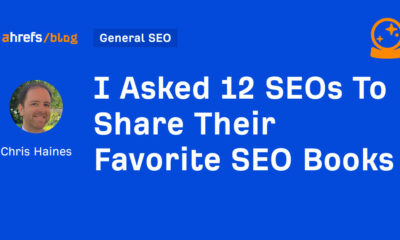



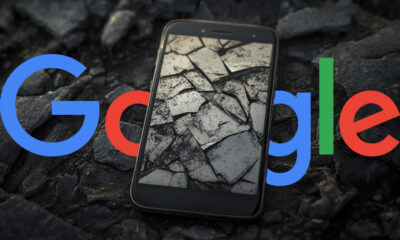

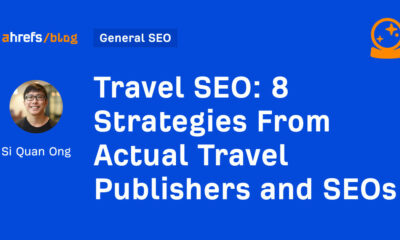



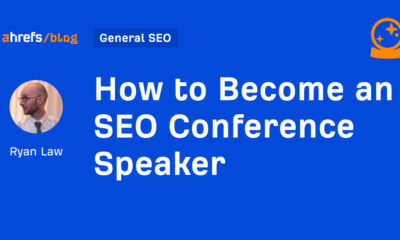



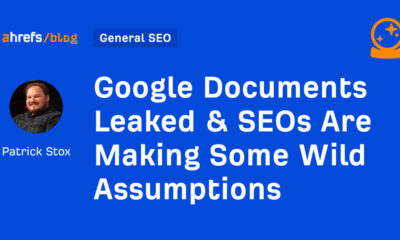



You must be logged in to post a comment Login